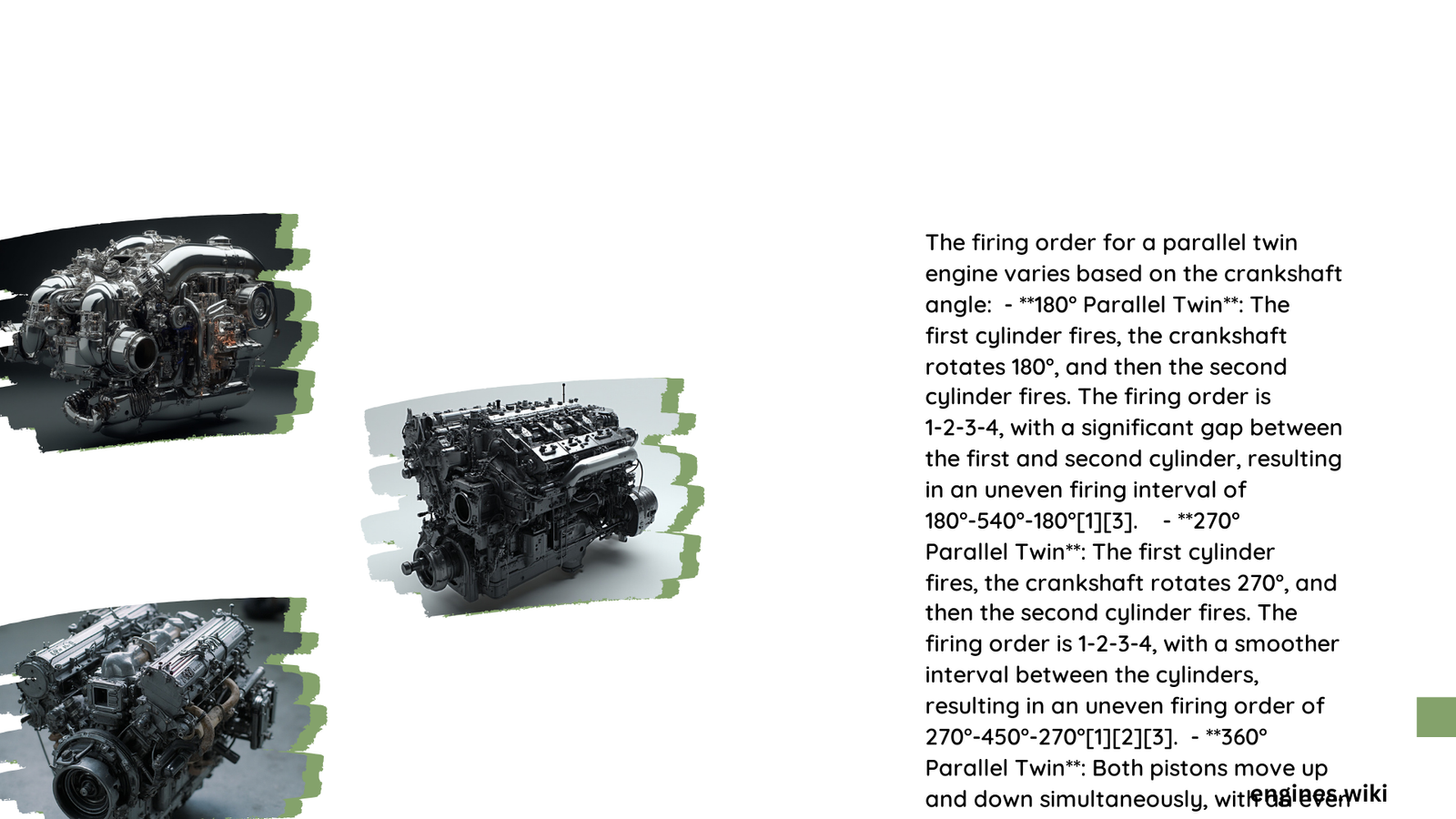Parallel twin engine firing order represents a critical aspect of engine design, determining power delivery, vibration characteristics, and overall performance. The configuration involves precise synchronization of pistons and crankshaft rotation, with three primary configurations—360, 180, and 270-degree—each offering unique mechanical behaviors that significantly impact engine dynamics, sound, and rider experience.
What Makes Parallel Twin Engine Firing Order Unique?
Parallel twin engines feature two cylinders positioned side-by-side, with firing sequences determined by crankshaft angle. These configurations create distinct mechanical signatures that influence:
- Power pulse distribution
- Vibration characteristics
- Exhaust note
- Overall engine performance
How Do Different Crankshaft Configurations Impact Performance?
360-Degree Crankshaft Configuration
| Characteristic | Details |
|---|---|
| Piston Movement | Synchronized up and down |
| Firing Interval | 360 degrees between fires |
| Vibration Level | Higher overall vibrations |
| Typical Applications | Older motorcycle designs |
Key features of 360-degree configuration:
– Simplest mechanical design
– Pistons move together
– Less complex balancing requirements
– More pronounced engine vibrations
180-Degree Crankshaft Configuration
Characteristics of 180-degree configuration include:
– Pistons move in opposite directions
– Uneven power pulse distribution
– Enhanced torque characteristics
– Significant rocking-couple vibrations
Performance Implications:
1. More aggressive power delivery
2. Distinctive exhaust note
3. Requires advanced balancing mechanisms
270-Degree Crankshaft Configuration
The 270-degree configuration represents a modern engineering approach, offering:
– Balanced power delivery
– Reduced vibration
– Improved throttle response
– More characterful exhaust note
Technical Advantages:
– Eliminates inertial torque
– Provides smoother engine feel
– Optimizes primary and secondary balance
What Challenges Emerge in Parallel Twin Engine Design?
Parallel twin engine designers must address several critical challenges:
- Vibration Management
- Implement counterbalancer systems
- Design precise crankshaft geometries
-
Utilize advanced material technologies
-
Ignition Timing Precision
- Maintain consistent power delivery
- Optimize fuel efficiency
-
Reduce emissions
-
Mechanical Complexity
- Balance manufacturing costs
- Ensure long-term reliability
- Meet performance expectations
How Do Manufacturers Select Firing Order?
Manufacturers consider multiple factors:
– Intended vehicle application
– Performance requirements
– Cost constraints
– Desired engine character
Conclusion

Parallel twin engine firing order represents a sophisticated engineering discipline, balancing mechanical principles with performance objectives. Each configuration offers unique advantages, making the selection process a nuanced engineering challenge.
